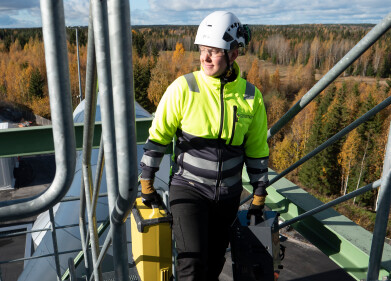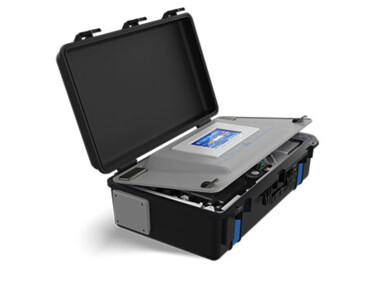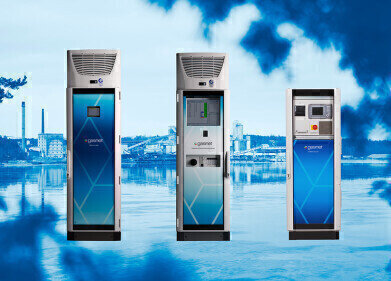Stack monitoring
Why monitoring at refineries needn’t be a headache with MCERTS approved systems for CEMS, process control and fence-line monitoring
May 06 2019
The market leading System 400 DOAS (differential optical absorption spectroscopy) cross-duct system manufactured by Opsis AB and distributed in the UK by Enviro Technology Services and is a low maintenance, non-extractive, multi-gas monitoring system that measures stack gases quickly, easily and directly and without any contact as they pass through the stack. This innovative and unique system delivers high reliability, high data capture rates and maximum customer value and benefits, including minimum operator maintenance.
This unit offers real time monitoring, with low energy consumption, that is highly cost effective and accurate at the same time. System 400 DOAS offers representative path-integrated data and is MCERTS and EN 15267 approved. Minimum maintenance is required and gas calibration only needs to be carried out once a year
The system can be easily tailored for almost any CEM and process control application and due to its non-contact, non-extractive principle of operation, requires the absolute minimum of operator involvement or maintenance. There are no pumps, no heated sample lines, no valves and no filters.
Opsis gas monitoring solutions are well suited for permanent use at refineries, both for process control, for emissions monitoring, and for ambient air quality monitoring.
For emissions monitoring and process control, Opsis optical non-contact systems are able to measure concentrations of a number of process gasses occurring in the refinery industry. This includes, but is not limited to: NO, NO2, SO2, CO, CO2, CH4, H2S, Hg, H2O, and O2.
The AR600, AR620 and/or AR650 analysers (components in the Opsis System 400) can be used for process control and CEMS applications. The monitoring paths can be of cross-stack (in-situ), fast-loop, and hot-wet-extractive types.
These analysers can perform cross-stack monitoring (CS): The traditional path solution, where the emitter and receiver are mounted directly on the flue gas duct, emitter on one side and receiver on the other side.
They can also carry out fast-loop solutions (FL): In some cases, it is not possible or desirable to mount the emitter/receiver equipment directly on the main process or exhaust duct. Instead, a monitoring path can be established separately from the duct. Relatively large diameter insulated tubing leads the flue gas from the main duct to the monitoring path, and then back to the duct. The flow through the loop can be driven by pressure difference in the main duct, or by a fan. A fast loop solution can also be a way to manage safety zone constraints.
Additionally they also offer hot wet extractive solutions (HWE): This combines the features of a traditional extractive system with the open-path DOAS monitoring technique. It is used in cases where extractive sampling is required, for example to provide a suitable gas flow for the converter used in total mercury (THg) or low-concentrations H2S monitoring.
For ambient air quality and fenceline monitoring, Opsis open-path monitoring systems (AQMS) can be used to assess the environmental impact of the production processes in the areas surrounding the refinery with monitoring path lengths available up to 800m. This can serve several purposes – firstly to monitor the general air quality of the surroundings, providing emissions data at the plant boundary/fenceline, but also to estimate and map fugitive emissions from the production facility, and to act as an alarm system in case of accidental releases of air pollutants.
All three purposes can be served by a single monitoring system. AQM can be initiated by local authorities wishing to monitor and protect the public health, but it can just as well be on initiative from the facility, to show that the air pollution levels are limited and under control.
As no CEM requirement is the same, ET works closely with the customer to provide solutions specific to their needs. Installing and operating an Opsis CEM system is easy, with low operating costs, minimum maintenance, and maximum availability.
Digital Edition
AET Guide 2025
March 2025
Buyer's Guide Directory - Product Listings by Category - Suppliers Listings (A-Z) Air Monitoring - Stack Emissions Multi-Gas Analysis: OFCEAS<sup>®</sup> Technology Seduces the Market...
View all digital editions
Events
Mar 18 2025 Expo Santa Fe, Mexico
Mar 18 2025 Moscow, Russia
Mar 19 2025 Manila, Philippines
Mar 19 2025 New Delhi, India
Mar 20 2025 Guangzhou, China













.jpg)





